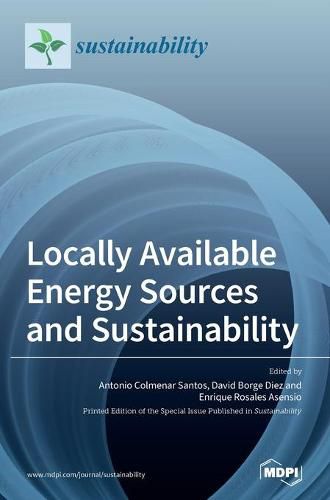Readings Newsletter
Become a Readings Member to make your shopping experience even easier.
Sign in or sign up for free!
You’re not far away from qualifying for FREE standard shipping within Australia
You’ve qualified for FREE standard shipping within Australia
The cart is loading…






This title is printed to order. This book may have been self-published. If so, we cannot guarantee the quality of the content. In the main most books will have gone through the editing process however some may not. We therefore suggest that you be aware of this before ordering this book. If in doubt check either the author or publisher’s details as we are unable to accept any returns unless they are faulty. Please contact us if you have any questions.
Renewable energy is electricity generated by fuel sources that restore themselves over a short period of time and do not diminish. Although some renewable energy technologies impact the environment, renewables are considered environmentally preferable to conventional sources and, when replacing fossil fuels, have significant potential to reduce greenhouse gas emissions. This book focuses on the environmental and economic benefits of using renewable energy, which include: (i) generating energy that produces no greenhouse gas emissions from fossil fuels and reduces some types of air pollution, (ii) diversifying energy supply and reducing dependence on imported fuels, and (iii) creating economic development and jobs in manufacturing, installation, and more. Local governments can dramatically reduce their carbon footprint by purchasing or directly generating electricity from clean and renewable sources. The most common renewable power technologies include: solar (photovoltaic (PV), solar thermal), wind, biogas (e.g., landfill gas, wastewater treatment digester gas), geothermal, biomass, low-impact hydroelectricity, and emerging technologies such as wave and tidal power. Local governments can lead by example by generating energy on site, purchasing green power, or purchasing renewable energy. Using a combination of renewable energy options can help to meet local government goals, especially in some regions where availability and quality of renewable resources vary. Options for using renewable energy include: generating renewable energy on site, using a system or device at the location where the power is used (e.g., PV panels on a state building, geothermal heat pumps, biomass-fueled combined heat and power), and purchasing renewable energy from an electric utility through a green pricing or green marketing program, where buyers pay a small premium in exchange for electricity generated locally from green power resources.
$9.00 standard shipping within Australia
FREE standard shipping within Australia for orders over $100.00
Express & International shipping calculated at checkout
This title is printed to order. This book may have been self-published. If so, we cannot guarantee the quality of the content. In the main most books will have gone through the editing process however some may not. We therefore suggest that you be aware of this before ordering this book. If in doubt check either the author or publisher’s details as we are unable to accept any returns unless they are faulty. Please contact us if you have any questions.
Renewable energy is electricity generated by fuel sources that restore themselves over a short period of time and do not diminish. Although some renewable energy technologies impact the environment, renewables are considered environmentally preferable to conventional sources and, when replacing fossil fuels, have significant potential to reduce greenhouse gas emissions. This book focuses on the environmental and economic benefits of using renewable energy, which include: (i) generating energy that produces no greenhouse gas emissions from fossil fuels and reduces some types of air pollution, (ii) diversifying energy supply and reducing dependence on imported fuels, and (iii) creating economic development and jobs in manufacturing, installation, and more. Local governments can dramatically reduce their carbon footprint by purchasing or directly generating electricity from clean and renewable sources. The most common renewable power technologies include: solar (photovoltaic (PV), solar thermal), wind, biogas (e.g., landfill gas, wastewater treatment digester gas), geothermal, biomass, low-impact hydroelectricity, and emerging technologies such as wave and tidal power. Local governments can lead by example by generating energy on site, purchasing green power, or purchasing renewable energy. Using a combination of renewable energy options can help to meet local government goals, especially in some regions where availability and quality of renewable resources vary. Options for using renewable energy include: generating renewable energy on site, using a system or device at the location where the power is used (e.g., PV panels on a state building, geothermal heat pumps, biomass-fueled combined heat and power), and purchasing renewable energy from an electric utility through a green pricing or green marketing program, where buyers pay a small premium in exchange for electricity generated locally from green power resources.